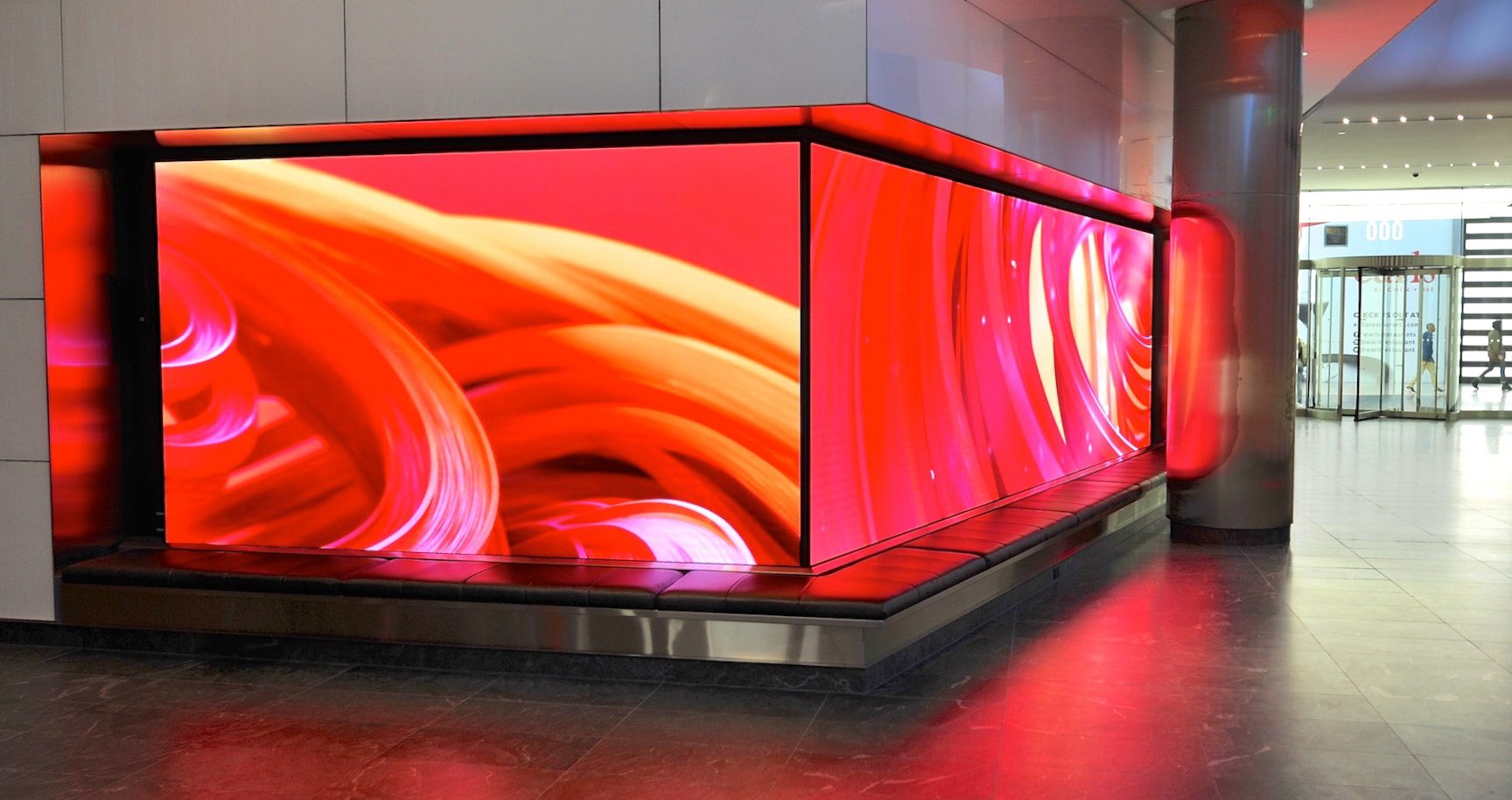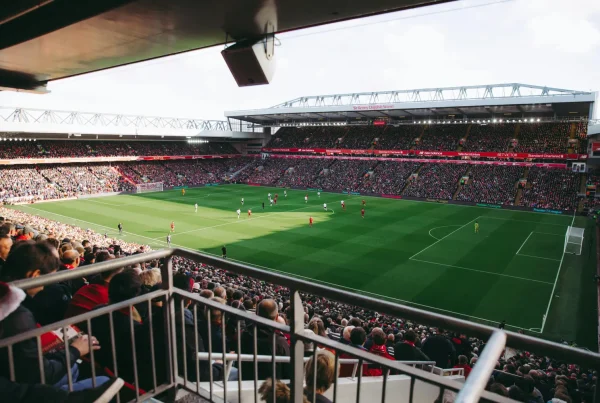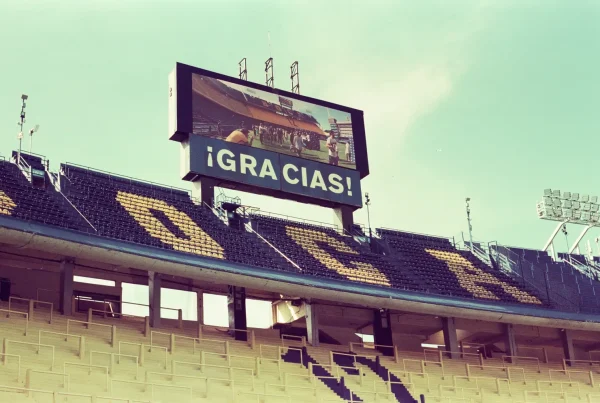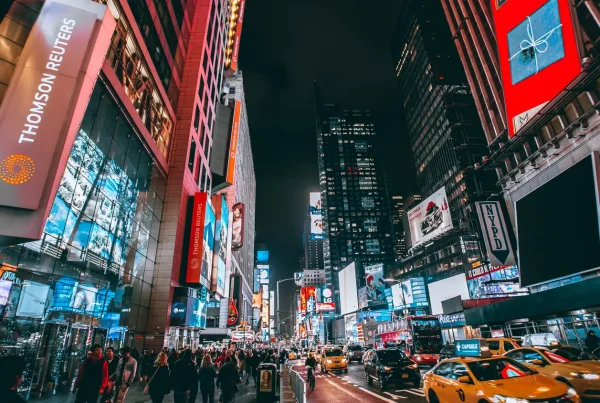When you think about video walls, what comes to mind? For most people, the first thing that comes to mind is a large bank of monitors that are used to display information or video content at concerts, corporate events, and trade shows. While these are still a common use for video walls, there are now many more possibilities for how you can use them in your business or organization.
For example, a business might use it to advertise a sale or new product. A school might use it to place announcements or schedule changes. A taxi might use the mini versions to carry ads while driving around town.
In short, LED video walls can now be customized to fit any need. It is a versatile and cost-effective way to get your message across. By using a LED video wall, you can create an immersive experience that your guests, customers, and clients will never forget.
What Is a LED Video Wall?
LED video walls are essentially large, high-resolution screens that use LEDs as the light source. They are often used for digital signage and advertising, and can be found in airports, shopping malls, and other public places. LED video walls come in a variety of sizes and resolutions, and can be customized to fit the needs of the customer. They are also relatively affordable compared to other types of video walls.
How To Choose the Right LED Video Wall
When it comes time to select an LED video wall for your business or organization, there are a few key things to keep in mind. By asking yourself a few simple questions, you can narrow down your options and find the perfect video wall for your needs.
1. What will you be using the video wall for?
The first step is to figure out what you will be using the video wall for. If you need a large screen for displaying information or visuals at a trade show or event, then you’ll want something that is large and easy to see from a distance. Conversely, if you need a video wall for use in a more controlled LED setting, like in a conference room or studio, then you can opt for smaller panels that provide more detail and resolution.
2. What types of customizations do you prefer?
There are many types of customizations that you can make to your LED video wall. One of the most important decisions that you will make is what type of customization you prefer. There are options with variable color hues, tones, and brightness of the LEDs. This gives you the ability to create a changing video wall that constantly fits your needs. However, if you don’t want to deal with all of the customization options, there are also some preset options available. These preset options allow you to choose preset sizes, shapes, resolutions, and brightness.
3. What content would you like to display?
LED video walls can display a variety of content, from static images to videos. The type of content that you would like to display should be considered when choosing a LED video wall. The type of content you plan to show will help determine the ideal type of the video wall you need. For example, if you will be displaying primarily text or images, a smaller video wall with lower resolution may be adequate. However, if you plan to display high-definition video content, you will most likely need a larger video wall with higher resolution.
4. Would you like to integrate your LED video wall with other components?
When choosing a LED video wall, ask yourself if you want to integrate it with other audio and visual elements for an immersive experience. Some common integrations include pairing an LED video wall with a sound system for enhanced audio, or using it in conjunction with projection systems for stunning visual effects. By working with a professional LED manufacturer, you can create a system that is perfectly tailored to your needs and desires. Whatever your needs, there is sure to be an integration that will fit the bill.
5. Do you need your LED video wall indoors or outdoors?
When choosing an LED video wall, another of the first decisions you’ll need to make is whether you want to use it indoors or outdoors. Outdoor LED video walls must be weatherproofed in order to withstand the elements. Indoor LED video walls do not need this protection. Additionally, most outdoor LED video walls tend to be larger than indoor LED video walls because they are often viewed from a farther away distance. Our team at Yaham can work with you to consider the climate where your video wall will be used. If it will be exposed to direct sunlight or other types of harsh weather conditions, then you’ll need an outdoor model that can handle those conditions. Outdoor LED video walls typically have a higher price tag than indoor models, but they’re worth it if you need that extra protection from the elements.
6. Do you need single or multiple viewing angles?
When it comes to LED video walls, there are two main options to choose from when it comes to viewing angles: single or multiple. So, which one is right for you? Here are a few things to consider:
i. How many people will be viewing the video wall at once? If you have a lot of people who will be gathered around the video wall to watch, then you’ll need multiple viewing angles. This way, everyone gets a good view.
ii. What kind of content will be displayed on the video wall? If you’ll be displaying static images or text, then a single viewing angle will work just fine. However, if you’ll be playing videos or other multimedia content, then you’ll need multiple angles to ensure that everyone sees everything correctly.
Generally, however, multiple-angle viewing is more expensive, but it offers a lot more flexibility.
Conclusion
In conclusion, a LED video wall can be a great addition to any event or space. They are eye-catching and can create a unique experience for your guests or customers. By hiring the right firm to help you with the installation and design, you can be sure that your video wall will be exactly what you wanted.
If you are interested in adding a LED video wall to your next event or project, be sure to contact us. We would be happy to help you create a one-of-a-kind experience!




